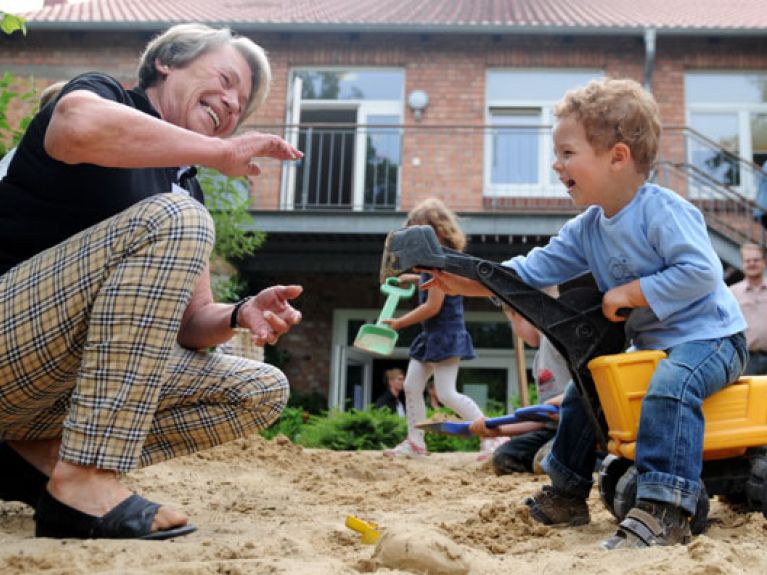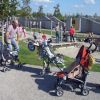Multi-generation houses bring young and old together
Multi-generation houses are somewhat reminiscent of a well-organized extended family, bringing together all age groups – from babies to 80-year-olds – and constituting a successful model in an era characterized by demographic and social change.

Every morning, little Emily and her great-grandmother make the same journey. The little girl plays during the day at the Salzgitter Childcare Centre, while her great-grandmother receives the care she needs under the same roof. The old lady suffers from dementia, and spends the day in the geriatric day care centre, just a few steps away across the hall. For the children and the old people, the door to the other part of the building remains open. This example of the multi-generation house in Salzgitter shows how such centres work: artificial boundaries between young and old are removed, allowing people to encounter each other in an unconstrained and entirely natural manner.
The “open meeting points” provide a focus – these are bistros or cafes where everyone is welcome. In all other respects, each multi-generation house is unique, and each may choose to emphasize different aspects. There are mobile phone surgeries for the elderly, homework support for schoolchildren, “international kitchen chats” for people from every conceivable ethnic group, art and theatre courses.
In 2006, the then family minister Ursula von der Leyen (Christian Democratic Union) initiated these new institutions in local communities. The idea was to bring together under one roof groups that had previously operated in isolation from one another, i.e. childcare groups, youth centres, mother centres, community centres for the elderly and advice centres. The mothers’ centre in Salzgitter was the role model, it being Germany’s very first multi-generation house. The initiative was prompted by the changed social structures in Germany: nowadays, it is becoming increasingly rare to find the traditional extended family model where several generations live under one roof or in the immediate neighbourhood. The multi-generation houses are designed to offer an alternative for older people who feel lonely and for young families who need support but have no grandparents living nearby.
In 2012, the Federal Ministry of Family Affairs, Senior Citizens, Women and Youth launched its follow-up programme Multi-Generation Houses II, with funding for 450 centres. This financial support is part of the German government’s demography strategy. Nationwide, nearly all administrative districts and urban municipalities now have their own multi-generation house. Furthermore, all participants in Action Programme II are co-financed out of the European Social Fund (ESF).
These “public living rooms” have meanwhile come to be regarded as an important example of new concepts in a modern welfare state, where conventional institutional help is combined with mobilized civic engagement. Yet they also offer a great deal more: “People are rarely happy on their own”, believes Dr Eckart von Hirschhausen, an author, moderator and patron of the multi-generation house in Berlin’s Zehlendorf district: “Which is why multi-generation houses are the model for the future: learning from one another, feeling needed, sharing joy. A real recipe for happiness!”
www.mehrgenerationenhaeuser.de
© www.deutschland.de
